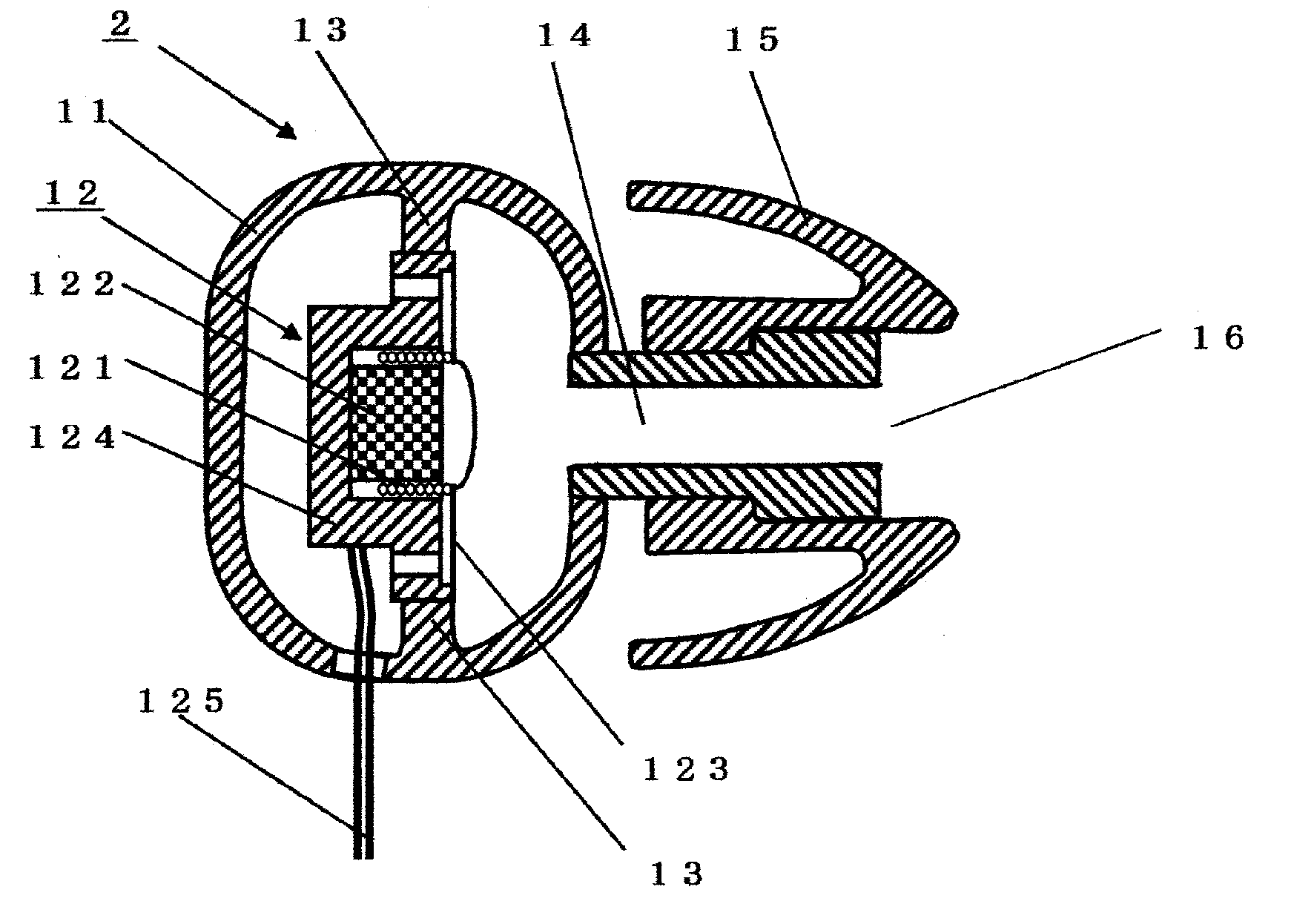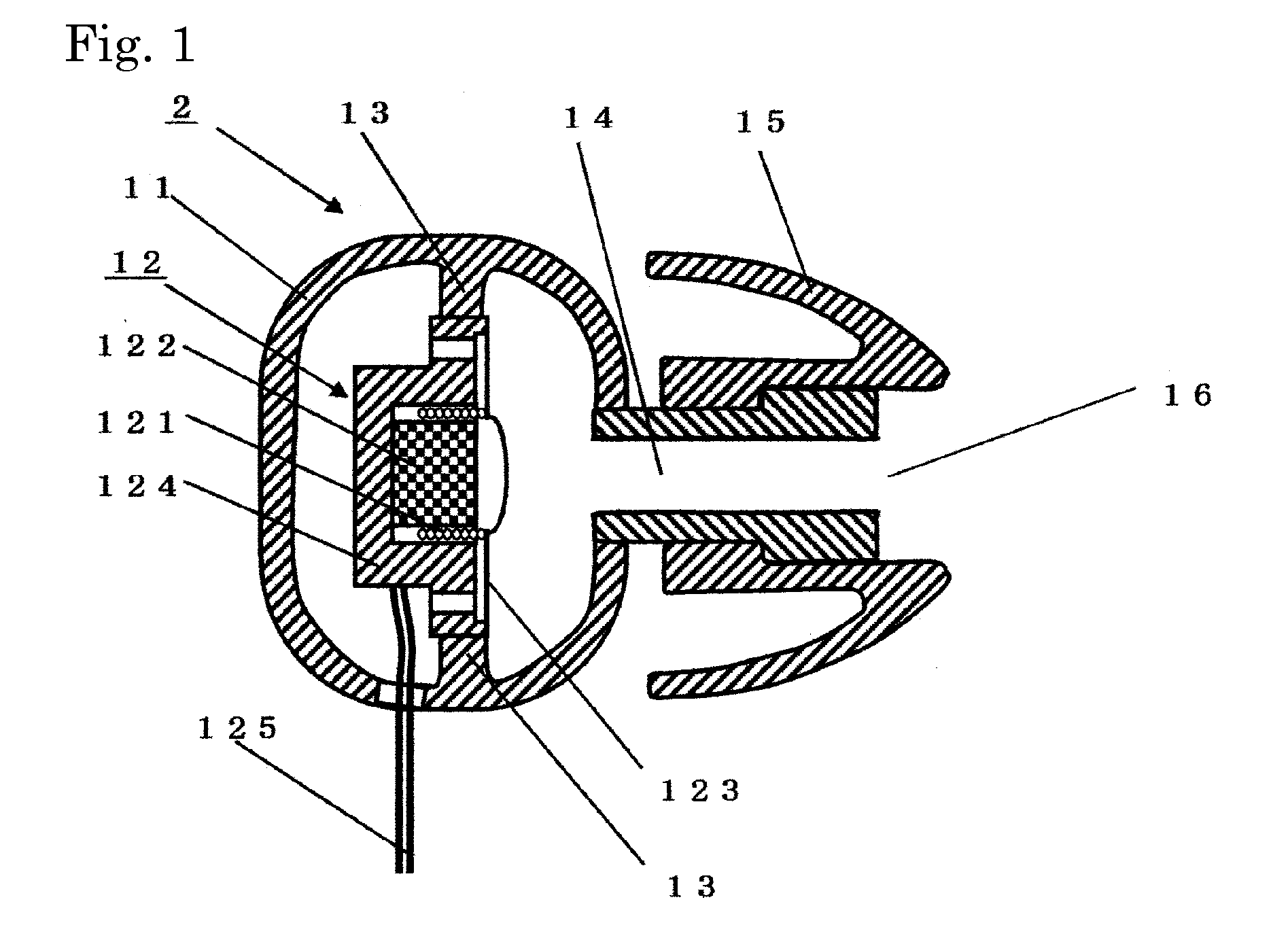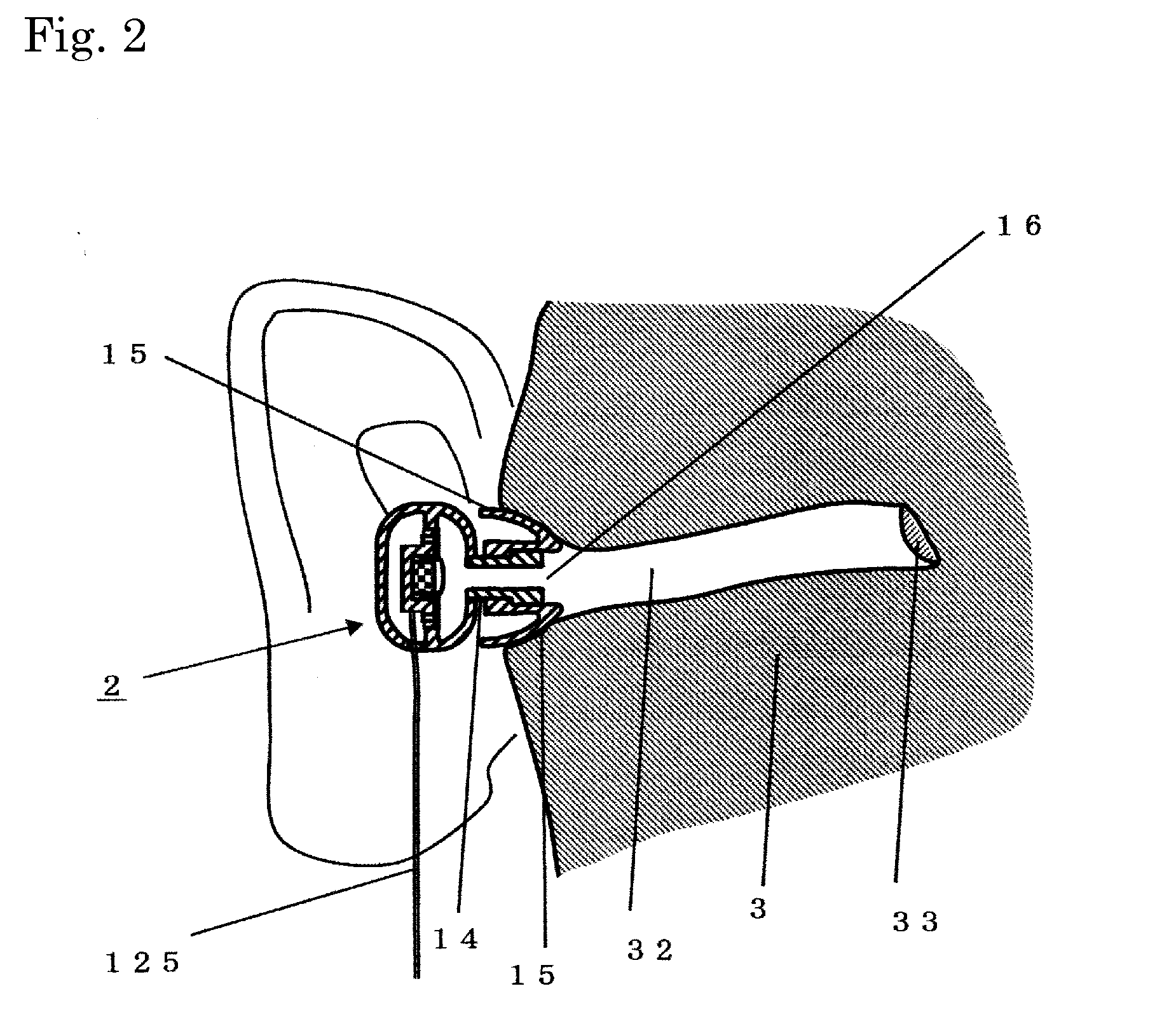Twin driver earphone
a technology of earphones and drivers, applied in the direction of earpiece/earphone attachments, transducer details, electrical transducers, etc., can solve the problems of serious defect in the frequency characteristics of earphones, -resonant state would be created, and the effect of suppressing the sound pressur
- Summary
- Abstract
- Description
- Claims
- Application Information
AI Technical Summary
Benefits of technology
Problems solved by technology
Method used
Image
Examples
first embodiment
[0045]FIG. 4 is a diagram of a sound-isolating earphone (twin-driver earphone) provided with two independent electroacoustic transducers and sound leading pipes, wherein FIG. 4(a) is a schematic view and FIG. 4(b) is a cross-sectional view.
[0046]One housing of the sound-isolating earphone (twin-driver earphone) has the same internal structure as that of the ordinary sound-isolating earphone illustrated in FIG. 1. The sound-isolating earphone (twin-driver earphone) 1 is configured as illustrated in FIG. 4(b), including a first electroacoustic transducer 12a built in a first housing 11a associated with a first sound leading pipe 14a, a second electroacoustic transducer 12b built in a second housing 11b associated with a second sound leading pipe 14b, an ear pad 15, and a lead wire 125 which connects the two electroacoustic transducers 12a, 12b to an unillustrated audio amplifier.
[0047]The electroacoustic transducer 12 includes a coil 121, a permanent magnet 122, a diaphragm 123 and a ...
second embodiment
[0074]A second embodiment is described with reference to FIG. 7. FIG. 7 is a cross-sectional diagram of a sound-isolating earphone provided with two electroacoustic transducers which are disposed in opposite directions. The Figure depicts an example in which two electroacoustic transducers 12 are arranged back to back in a single housing 11. The foregoing discussion of the first embodiment applies also to such an arrangement.
[0075]As depicted in FIG. 7, the two electroacoustic transducers 12a and 12b are arranged in the opposite directions along an arrangement axial line A-A′ which connects central points of respective diaphragms to each other. Here, the arrangement axial line A-A′ is parallel or generally parallel to the direction of a sound wave emitted from a sound outlet 16.
[0076]Although mechanical vibrations produced when the electroacoustic transducers 12 generate sounds become a source of noise (distortion) by moving the diaphragm, it is possible to cancel out the mechanical...
third embodiment
[0080]A third embodiment is a sound-isolating earphone (twin-driver earphone) used with a sound-emitting portion thereof inserted in an entrance of an external auditory canal, the sound-isolating earphone (twin-driver earphone) being characterized by including two or more electroacoustic transducers and sound leading pipes having different path lengths, the sound leading pipes being associated with the respective electroacoustic transducers, wherein sound waves generated by the two or more electroacoustic transducers at the same phase and passed through the respective sound leading pipes are combined at the entrance of the external auditory canal, the sound pressure of a frequency component of which half the wavelength equals a difference among path lengths of the two or more sound leading pipes is suppressed, and an acoustic resistor is disposed in each sound-conducting path of all or part of the two or more sound leading pipes.
[0081]The third embodiment is described with reference...
PUM
 Login to View More
Login to View More Abstract
Description
Claims
Application Information
 Login to View More
Login to View More - R&D
- Intellectual Property
- Life Sciences
- Materials
- Tech Scout
- Unparalleled Data Quality
- Higher Quality Content
- 60% Fewer Hallucinations
Browse by: Latest US Patents, China's latest patents, Technical Efficacy Thesaurus, Application Domain, Technology Topic, Popular Technical Reports.
© 2025 PatSnap. All rights reserved.Legal|Privacy policy|Modern Slavery Act Transparency Statement|Sitemap|About US| Contact US: help@patsnap.com



